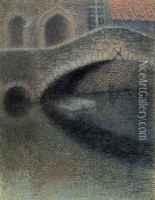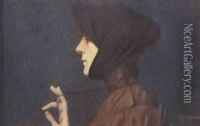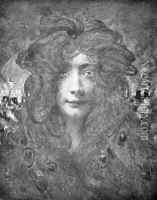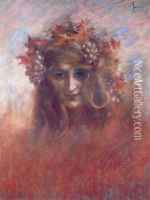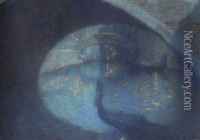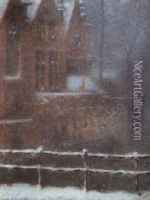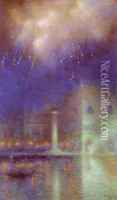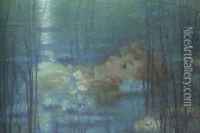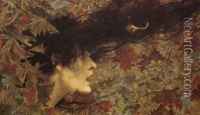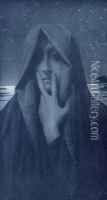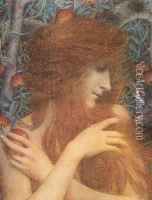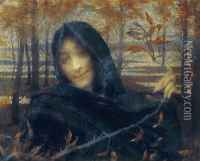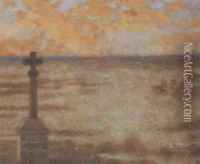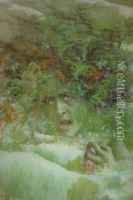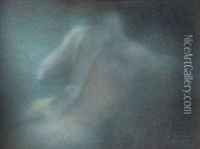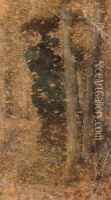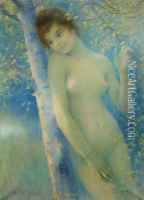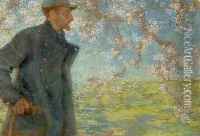Lucien Levy-Dhurmer Paintings
Lucien Levy-Dhurmer was a French Symbolist/Art Nouveau artist known for his versatility across different mediums, including painting, drawing, ceramics, and interior decoration. Born Lucien Lévy on September 30, 1865, in Algiers, French Algeria, he moved to Paris in 1879, where he began his artistic education at the Ecole Communale de Dessin et de Sculpture, studying under Justin Lequien.
In the early stages of his career, Levy-Dhurmer worked as a lithographer, but his interest in ceramics led him to take a position at the famous Clement Massier pottery studio in Golfe-Juan in 1887. There, he adopted the surname Levy-Dhurmer, combining his mother's maiden name with his own. His work at the studio marked a significant period in his life, during which he crafted remarkable pieces that contributed to the revival of French artistic ceramics. His innovative techniques and use of iridescent glazes garnered much attention and acclaim.
Levy-Dhurmer transitioned from ceramics to painting in the mid-1890s. His paintings, often characterized by a dreamlike and ethereal quality, were influenced by Symbolism and were imbued with a sense of mysticism and poetic romanticism. He was particularly adept at capturing the nuances of light and atmosphere, which became a hallmark of his painted works. His subjects ranged from landscapes and portraits to allegorical and mythological scenes.
One of his most significant and recognized works is the portrait of 'Georges Rodenbach' (1895), which exemplifies his Symbolist style. The portrait conveys a profound psychological depth and is considered a masterpiece of the Symbolist movement. Throughout his career, Levy-Dhurmer continued to exhibit his work at various salons and exhibitions, gaining recognition both in France and internationally.
Beyond painting and ceramics, Levy-Dhurmer was also involved in the design and decoration of interiors, applying his artistic vision to the creation of harmonious and aesthetically pleasing environments. His approach often included a blend of different styles, incorporating elements of Art Nouveau and Symbolism.
Levy-Dhurmer's work evolved over time, and he later embraced a more classical style, drawing inspiration from the Renaissance and the Quattrocento. Despite this shift, he never abandoned the mystical and atmospheric qualities that defined his earlier work.
Lucien Levy-Dhurmer passed away on September 24, 1953, in Le Vésinet, leaving behind a diverse and impactful body of work that continues to be celebrated for its beauty and artistic significance. His contributions to the development of French art at the turn of the 20th century remain an important part of the artistic heritage of the period.
